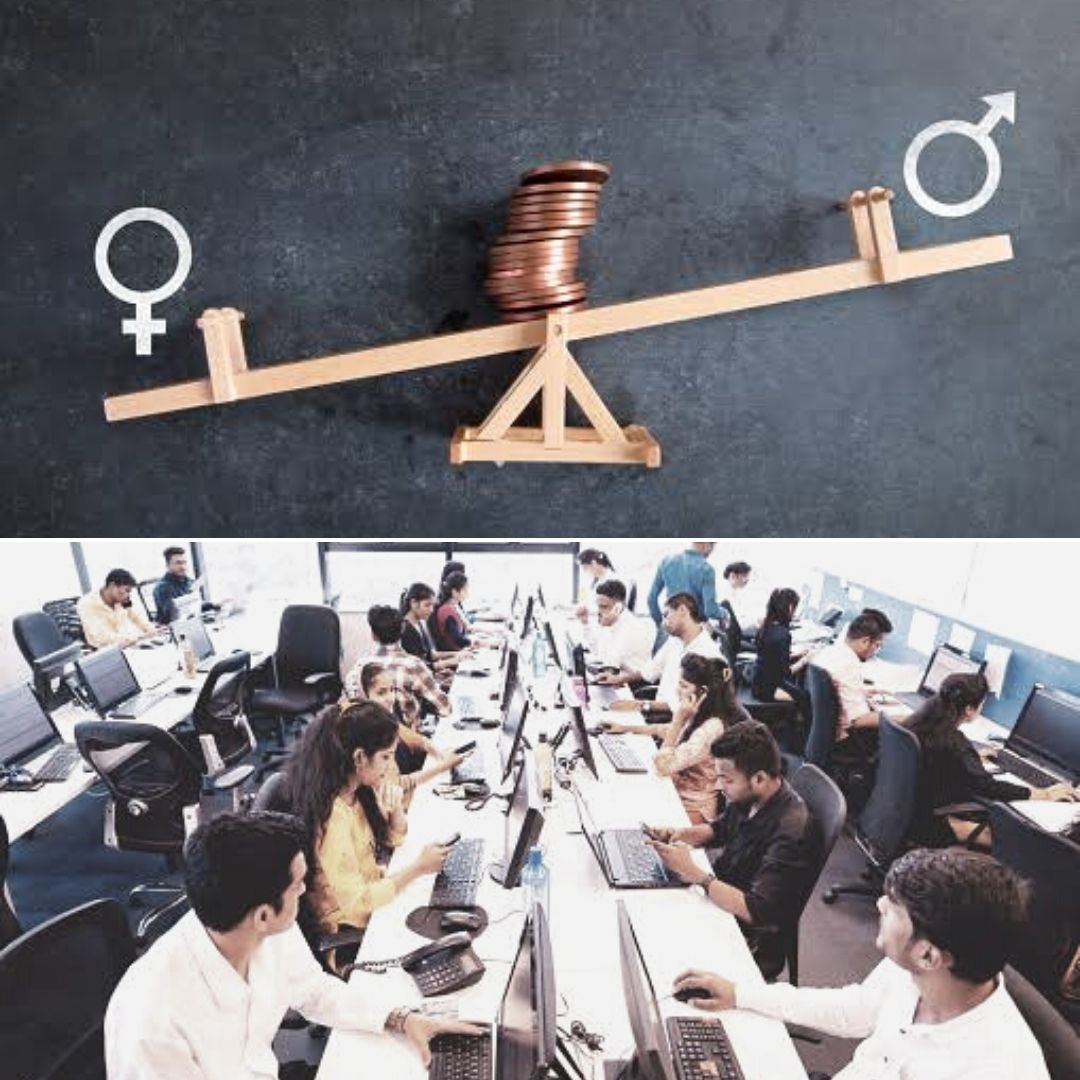Indian Women, Muslims, Marginalised Face Discrimination In Jobs And Income, Says Oxfam Report
Writer: Laxmi Mohan Kumar
She is an aspiring journalist in the process of learning and unlearning many things. Always up for discussions on everything from popular culture to politics.
India, 16 Sep 2022 7:25 AM GMT
Editor : Snehadri Sarkar |
While he is a massive sports fanatic, his interest also lies in mainstream news and nitpicking trending and less talked about everyday issues.
Creatives : Laxmi Mohan Kumar
She is an aspiring journalist in the process of learning and unlearning many things. Always up for discussions on everything from popular culture to politics.
The report found that a man earned Rs4,000 more than a woman with the same capacities, a non-muslim earned Rs7,000 more than one who identified as a Muslim, and those in the bottom of the caste hierarchy made Rs5,000 less than others.
The latest Oxfam India report came up with findings that may seem detrimental to India's economic goals and the idea of equal treatment. Findings from the report indicate that women, Muslims, Dalits, and tribals have been on the receiving end of several discriminatory practices in workplaces.
Defining discrimination in the labour market as the situation when people with "identical capabilities are treated differently because of their identity or social backgrounds", CEO of Oxfam India, Amitabh Behar, says that the study collected data between the years 2004 to 2020. Government data on jobs, wages, health and agricultural credit among various social groups was accessed and used to identify the patterns of discrimination.
While women in the country have faced the challenges of breaking the glass ceilings for age-long, similar barricades extend further to historically oppressed communities who have been trying to step up in the mainstream. They continue to face discrimination in accessing jobs or securing their livelihoods, said the India Discrimination Report 2022.
Continued Struggle Of Women Reflects On Labour Participation Rates
The inequality faced by these communities was not attributed to poor access to education qualifications or work experience, instead noted discrimination as the underlying cause. Discriminatory practices in the country caused 100 per cent of employment inequality faced by women in rural areas and 98 per cent in urban areas labour markets, as per the report.
The study emphasises that women in the country with high educational qualifications and work experience were still subjected to discrimination when compared to a man on the same levels. A report by the New Indian Express quoted that most of these cases were traced back to prejudices that are deep-rooted within society and employers.
In terms of income, women earned lesser wages due to 67 per cent discrimination and 33 per cent due to lack of education or experience. Behar added on to this and noted that a man and woman who start on equal footing in the economic sphere would be treated differently, and the women were found to lag behind in "regular/salaried, casual and self-employment."
These factors directly influenced the low Women's Labour Force Participation Rate (LFPR) in India. Supporting this finding further was the Union Ministry of Statistics and Programme Implementation (MoSPI), which said that women LFPR in India was barely 25 per cent in 2020-21 for urban and rural women. This was a drastic drop from 42.7 per cent in 2004-05.
Historically Oppressed Communities In The Modern Economy
Supporting the discrimination faced by women and the specific social communities, the report elaborated that a man would earn ₹4,000 more than a woman, a non-Muslim earned ₹7,000 more than Muslims, and those at the bottom of the caste system and tribespeople made ₹5,000 less compared to the others in the industry.
Caste played a major barrier when it came to accessing agricultural credit, despite many agricultural labourers coming from the scheduled caste (SC) or tribal (ST) communities. STs and SCs have reportedly received less than a quarter of the credit shares that Forward Castes (FCs) receive.
In the case of self-employed SC/ST workers, the non-SC/ST earned three times more. The mean income for these marginalised communities in urban areas accounted for about ₹15,312, compared to ₹20,346 that people from the general category earned. This indicated that individuals from the general category earned about 33 per cent more than SCs or STs.
Muslims continue to face several prejudices and multidimensional challenges, whether it is a salaried job or a self-employment opportunity. A news report from the The News Minute showed that discrimination against the community had intensified in the past 16 years.
In rural regions, this contributed to a sharp increase in unemployment by 17 per cent among Muslims during the first quarter of the Covid-19 pandemic, making their unemployment rate stagnate at 31.4 per cent. Within the urban crowds, 15.6 per cent of the Muslim population aged 15 and above were engaged in regular salaried jobs in 2019-20, compared to the 23.3 per cent of non-Muslims who were able to secure regular salaried jobs.
Multiple Independent Studies Point In The Same Direction
Earlier several independent studies were conducted by different organisations to understand the employability of several communities post-pandemic. A study by Led By Foundation gained attention in recent times for their findings that there is huge discrimination and discrepancy between Hindu and Muslim women receiving job callbacks.
The foundation was developed at the renowned Harvard University to study the representation of Muslim women in the workforce. Titled "Hiring Bias: Employment for Muslim women at entry-level roles", the study was conducted over a span of 9 months from 2021 to 2022.
About 2,000 job applications were sent across to 1,000 job postings on prominent job search sites with two dummy profiles, one of a Hindu woman and the other of a Muslim woman. With the exception of their religion indicated through their names, the resumes were kept the same to understand the employer's bias.
It deduced that the net discrimination rate faced by Indian Muslim women in the job market, compared to Hindu women, is 47.1 per cent. For every two callbacks that a Hindu woman received, a Muslim woman received only one. It also shed light on the region-wise discrepancy and found discrimination rates to be 39.5 per cent in North India and about 60 per cent in South India.
The report by Oxfam solidifies these independent studies through the analysis of available government data. They also said that there is a need for enforcement of effective measures by the government for the "protection and right to equal wages and work for all".
Some of the recommendations they put forth are to incentivise participation of women and other socially excluded communities in the workforce through enhancements in pay, upskilling, job reservations and easy return-to-work options after maternity for women.
Also Read: Gender Parity Still A Dream? 1 In 3 Women In India Still Aspire For Leadership Position
 All section
All section















